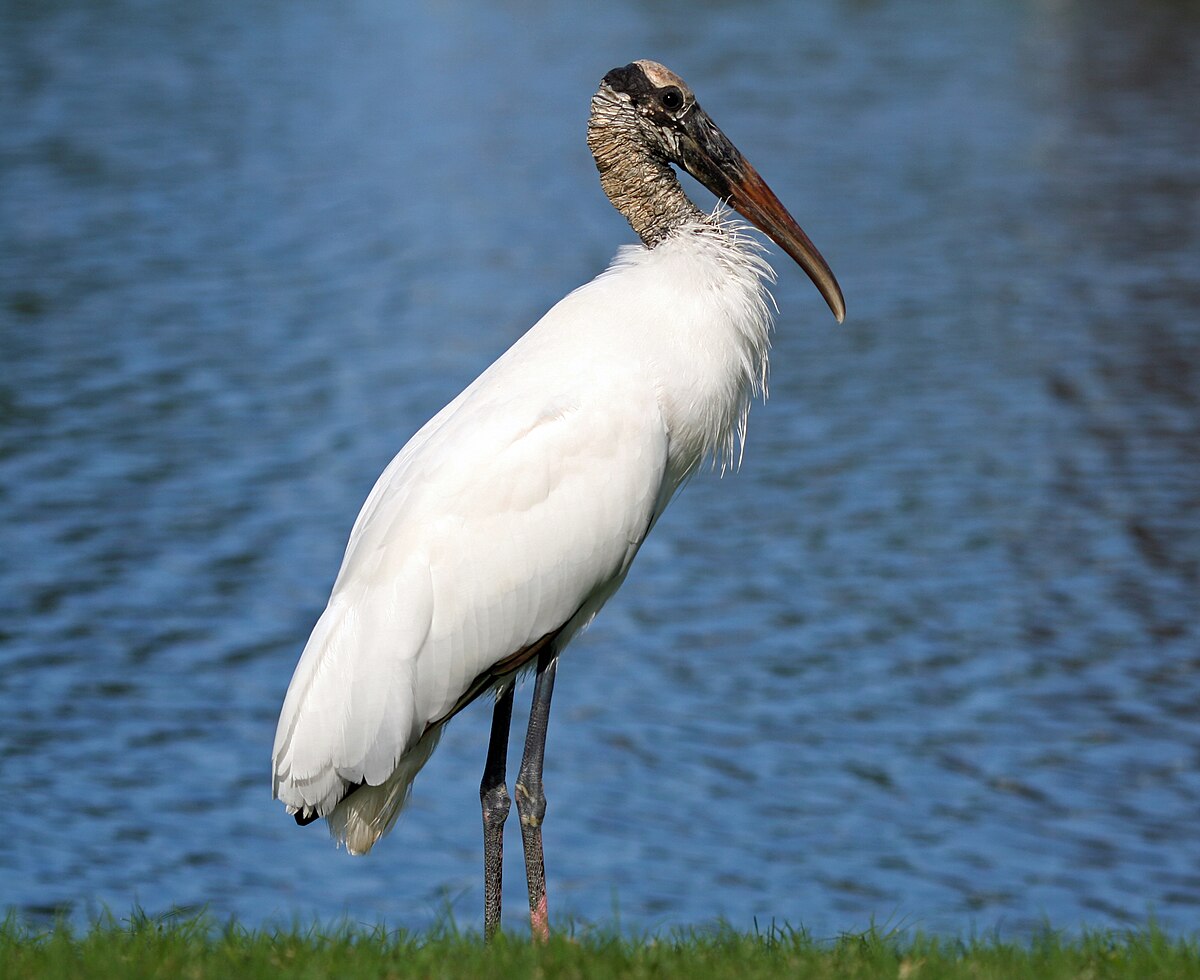The amniotes are a group of tetrapods that includes the living and extinct amphibians, birds, reptiles and mammals (four-limbed animals with backbones or spinal columns) that have relating to the earth or its inhabitants to make it suitable egg supplied with an amnios (pouch in which an embryo develops, and adjacent to the epidermis, formed by the ectoderm ( is one of the three primary germ cell layers in the very early embryo, and the other two are mesoderm (middle layer) and the endoderm (most proximal layer) of the fetus, and is elastic). These includes mammals with extinct relatives (synapsids) and reptiles and birds and their ancestor’s fossil (sauropsids). The amniotes embryos of animals laying eggs or carried by the female, are protected by numerous membranes. In the Eutherian mammals (humans), these membranes include the amniotic sac ( or bag of waters) is the sac in which the fetus develops in amniotes) surrounding the fetus. In zoology term, an egg is an organic vessel in which an embryo develop first. Most laying egg animals like birds, reptiles, fish, molluscs, insects, and monotremes is in the zygote, that result from fertilization of the ovum expelled from the body, and develop outside the body until the embryo is fully developed and can survive on its own. Outside the animal kingdom, the egg term is used differently, for an sometimes called an ovum or egg cell. In other animal kingdom, the reproductive structures similar to the egg are called spores, or (in spermatophytes or seed plants). Animals that lay eggs or Oviparous animals, with little or no other development within the mother. The oology is the study or collecting of eggs, particularly bird eggs.
Chicken egg and quail eggs
Tortoise egg Hatchling (amniote)
1) Monotreme Oviparous are mammals that lay eggs (Prototheria) instead of giving birth to young animals like marsupials (metatheria) and placental mammals (Eutheria). The only surviving examples of monotremes are all indigenous to Australia and New Guinea, although there is evidence that they once more widespread. Among living mammals they include the platypus and four species of spiny anteaters or echidnas.
Short-beaked Echidna
Tachyglossus aculeatus or short-beaked Echidna
Echidna curled into a ball
Echidna egg hatches after 10 days ( image credit: www.echidna.edu.au)
The short-beaked echidna (Tachyglossus aculeatus), is covered in fur and spines, and has a distinctive snout and a specialized tongue, which it uses to catch its prey at a great speed. Monotremes extant, lays eggs and the only group of mammals that lay eggs, and commonly found in many parts of New Guinea and in Australia.
Long Beaked Echidna, New Guinea
Western Long Beaked Echidna
The long-beaked echidnas, one of the two Zaglossus genera of spiny anteaters or echidnas, that are inhabitants of New Guinea.
2) Platypus
Platypus
Platypus calcaneus spur on male with venom
Platypus egg (image source: ttp://2.bp.blogspot.com/_TBo02pPkXnY/R-BvsRhqXHI/AAAAAAAAAdQ/Y-Q9zSfXdzE/s320/platypus+egg.jpg
The semi-aquatic mammal which is endemic to eastern Australia and Tasmania, is know as the platypus (Ornithorhynchus anatinus). Together with the echidna’s four species, it is one of the five monotremes extant species, the only mammals that lay eggs instead of giving birth. The unusual appearance of this Platypus, the egg-laying , venomous, duck-billed, beaver like tail, otter-foot like mammal, was thought to be fraud by European naturalist when they first encountered the Platypus. Platypus is one of the few venomous mammals, the male platypus having a spur on the hind foot that delivers a venom capable of causing severe pain to humans.
3) Amphibian are members of the class Amphibia, whose living forms including caecilians, newts, salamanders, toads and frogs. The Amphibians are cold-blooded, tetrapod vertebrates, and most of them have four limbs, and dwell in fresh waters or on land. But the caecilians (limbless) although they are included in the group, they live in damp soil and in burrows.
Frogs
Red Eye Treefrog , Central America
Common Reed Frog, found in Congo, Etiopia, Kenya
Frogspawn
Bufobufo tadpoles metamorphosis
Long Toad Salamander
Long-toed Salamander
Long-toed salamander, mass showing outer jelly layer connecting the mass and two inner capsules separating each egg.
Long toed salamander larva with eponymous fourth toes on the rear feet
Lungless Salamander
Lungless Salamander
The Lungless salamanders, in the family Plethodontidae are terrestrial and lay a small number of unpigmented eggs in a bunch among damp leaf litter, and the female salamander brood their eggs. Every egg has a large yolk sac and the larva feeds on this while it develops inside the egg, emerging fully formed as a juvenile salamander.
Japanese Giant Salamander
Japanese Giant Salamander, Andrias japonicus
The Japanese giant salamander (Andrias japonicus) also known as Ōsanshōuo meaning “giant pepper fish” is endemic to Japan, and the second largest salamander in the world, but surpassed by similar and related Chinese giant salamander (A. davidianus). The Japanese giant salamander, are limited to streams clear cool water, and they are aquatic and nocturnal reptiles. The life cycle is the same with other amphibian salamander, except they do not similar to that of an amphibious salamander except it does not remain underwater during adulthood, but go to mountains to lay eggs or spawn. Hynobiids salamander, practice external spawning or fertilization, and soon the larva emerge from the eggs, they lose their gills when they become adults, and the male hynobiids focus on egg sacs instead of the females during breeding, but parental care is always common. The female lays two egg sacs at a time, each containing up to seventy eggs.
Newt
Italian Crested Newt (Alpen Kammmolch)
Alpine Newt (Triturus alpestris)
A newt is of the Salamandridae family and an aquatic amphibian, although not all aquatic salamanders are considered newts. Newts are classified in the Pleurodelinae subfamily of the family Salamandridae, and commonly found in North America, Asia and Europe. Newts metamorphose have three distinct developmental life stages, such as, eft or the terrestrial juvenile and adult, aquatic larva. Adult newts have lizard-like bodies and may be either fully aquatic, living permanently in the water, or semi-aquatic, living terrestrially but returning to the water each year to breed.
Caecilians
Ringed Caecilian (Siphonops annulatus)
Caecilians (Dermophis mexicanus)
The caecilians are an Gymnophiona order (gymnos and ophis, which means naked serpent) of amphibians with long, cylindrical, limbless animals, that looks more on snakes or earthworms. They mostly live hidden in the ground, making them the least familiar order of amphibians, and closest relatives are group as clade apoda. They are mostly distributed in the tropics of South and Central America, Africa, and South Asia. The diet of caecilians is not well known. Most caecilians species lay their eggs underground and when the larva hatched, they make their way to adjacent bodies of water. Others brood their eggs and the larva undergo metamorphosis before the eggs hatch. A few species give birth to live young, nourishing them with glandular secretions while they are in the oviduct Caecilians are found in tropical Africa, Asia and Central and South America.
4) Fish
Agnatha Fish (Lampetra fluviatilis) Jawless fish
Agnatha (“no jaws”) is a jawless superclass fish in the phylum Chordata, subphylum Vertebrata. The gnathostomes are vertebrates with jaws, and are being excluded from the Agnatha.
Sea Lamprey
Lamprey mouth, considered pests
Sea Lamprey fish, attach to Lake trout fish
Egg of Lamprey
Lampreys are called “nine-eyed eels” per side, from a counting of their seven external gill slits on a side with one eye and the nostril, it is called Neunauge in German word, meaning “nine-eye”. Lampreys are also called lamprey eels, a vertebrates of jawless fish-like order whose adults are characterized by a toothed, funnel-like sucking mouth. The common name “lamprey” is derived from lampetra, which means stone licker in Latin terms, and they are popular species which bore into other fish’s flesh to suck their blood. Lamprey are not parasitic species and never feed on other fish species.
Hagfish
Pacific hagfish Myxini
hagfish eggs ( image credit: www.themanyfacesofspaces.com)
Hagfish, the clade Myxini (also known as Hyperotreti), are eel-shaped slime-producing marine animals commonly named as slime eels.
Seahorses
Babour’s seahorse, found Indonesia, Malaysia, Philippines
Hippocampus_bargibanti or pygmy seahorse
Lined Seahorse or spotted seahorse
Pregnant seahorse in an aquarium
Seahorse is in the Hippocampus genus among forty-seven species of marine fish, which comes from Hippos, a Greek word meaning horse and “kampos” meaning sea monster. The male ventral side is equipped with a brood pouch, or front-facing, side of the tail. During mating season, the female seahorse deposits up to 1,500 eggs in the male’s pouch, then the male seahorse carries the eggs for 9 to 45 days until fully developed. Once the seahorses are released into the water, the male’s role is done and he offers no further care and often mates again within hours or days during the breeding season. Soon the female releases her eggs, her body slims, while the male seahorse’s tummy swells, and the eggs reach maturity, she and her mate let go of any anchors and snout-to-snout, drift upward out of the sea-grass, often spiraling as they rise, and the female swims away. The female inserts her ovipositor into the male’s brood pouch and deposits dozens to thousands of eggs.
Leafy Sea Dragon
Leafy Sea-dragon
The leafy seadragon or Glauert’s seadragon Phycodurus eques, is a Syngnathidae family marine fish, which also includes the seahorses. It is the only member of the genus Phycodurus. It is found along the southern and western coasts of Australia, described, with long leaf-like protrusions coming from all over the body used as their camouflage. Similar with seahorses, the male leafy seadragon cares for the eggs. The female produces up to 250 bright pink eggs, then deposits them on to the male’s tail via a long tube, and the eggs are attach to a brood patch, which supplies them with oxygen. It takes a total of nine weeks for the eggs to begin to hatch, depending on water conditions. The eggs turn a ripe purple or orange over this period, after which the male pumps its tail until the infants emerge, a process which takes place over 24–48 hours, thus only 5% of the eggs survive. The male aids in the babies hatching by shaking his tail, and rubbing it against seaweed and rocks. Once born, the infant seadragon is completely independent, eating small zooplankton until large enough to hunt mysids. Leafy seadragons take about 28 months to reach sexual maturity.
Weedy Sea Dragon (Phyllopteryx)
Weedy Seadragon With Eggs (image credit: www.fusedjaw.com)
The weedy seadragon or common seadragon or Phyllopteryx taeniolatus, is a marine fish related to the seahorse, and endemic to Eastern Indian Ocean Australian waters. The weedy seadragon can be found approximately between Port Stephens, New South Wales, Tasmania and Geraldton, Western Australia.
Pipefish (Males lay eggs)
Alligator Pipefish
Pygmy Pipefish
Corythoichthys schultzi Pipefish
Flagtail Pipefish
Broadbanded Pipefish
Pipefishes or (Syngnathinae) are a subfamily of small fishes, and together with the seahorses, form the Syngnathidae family. Pipefishes, like their seahorse relatives, leave most of the parenting duties to the male pipefish, which have a specially developed area to carry eggs, deposited by the female. In some species this is just a patch of spongy skin that the eggs adhere to until hatching. Other species have a partial or even fully developed pouch to carry the eggs. The location of the brood patch or pouch can be along the entire pipefish’s underside or just at the base of the tail, as with seahorses.
Clownfish or Anemone Fish
Clown Fish or Anemone fish
Clown Fish (Amphiprion clarkii)
Anemone Fish protecting it’s spawn
Paradise Fish
Paradise Fish (Macropodus opercularis)
Paradise fish male and female
Baby Paradise fish Spawn hatched

Bubbles Nest

Betta Fish, spawning under a bubbles nest
Most typical bettas, gouramis fish during the spawning season it involves a male to build the bubble nest (a floating “saliva mat”-coated air-bubbles most often incorporate the plant matter) and attract the females. Soon the female betta accepts the male’s advances, the fish ‘embraces’ in open water, releasing both eggs and sperm into the water. then the male fish, begin to gather the fertilized egg, after each embrace, spitting them up into the bubble nest. After spawning, the male has no further use for the female and may violently attack her and even other fish that approaches the nest. Once the fry hatch and have begun to swim freely, the male is best removed and the fry raised on infusoria or newly hatched brine shrimp.
Catsharks
Catsharks (Scyliorhinus canicula)
Egg Case or Mermaid Purse
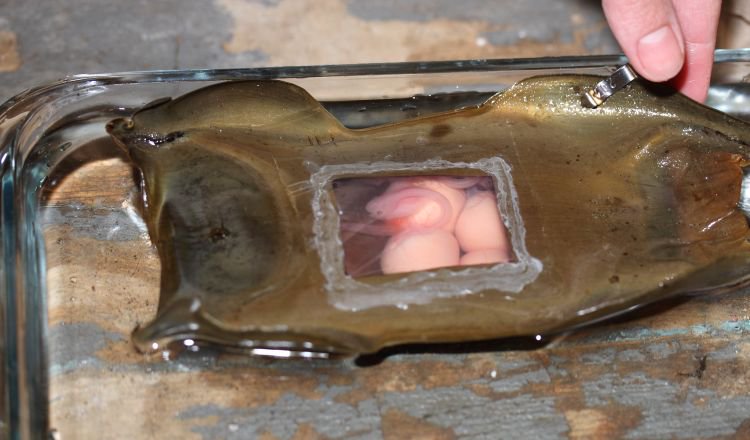
four Embryos inside egg case
crested bullhead shark feeds on the egg case
Roe and Caviar, Egg Fish
Salmon roe
Salmon Roe (Ikura don, Japanese Cuisine)
Tarako, Alaska Pollock Roe
Tobiko or Flying Fish roe
Sea urchin roe or eggs
Roe or hard roe is the fully ripe internalegg masses in the ovaries, or the released external fish egg masses and certain marine animals like the scallop, sea urchins and shrimps. The roe is used as a cooked ingredient or as raw ingredients in many dishes or cuisines as seafood. The roe of marine animals, such as lumpsucker, hake and salmon roe, is an excellent source of omega-3 fatty acids. The term soft roe or white roe denotes fish milt (the fish, mollusks and other water-dwelling animals seminal fluid, that reproduced by spraying the seminal fluid which contans the sperm into the fish eggs or roe.
Caviar
Caviar from salmon roe and sturgeon caviar
Black Beluga caviar
Caviar is a luxury food, consisting of processed, salted, non-fertilized roe or rip fish egg masses.
5) Reptiles
African Spurred Tortoise
African spurred tortoise
The African spurred tortoise, also known as African spur thigh tortoise or the Sulcata tortoise (Geochelone sulcata) , is a tortoise species that inhabits the Sahara desert southern edge, in northern Africa. The African spur is the third largest species of tortoise in the world and the largest species of mainland tortoise, not found on an island. In these arid regions the tortoise excavates burrows in the ground to get to areas with higher moisture levels spending the hottest part of the day in these burrows, known as aestivating, the state of animal dormancy, or period in organism’s life cycle, same with hibernation, characterized by inactivity and a lowered metabolic rate, that is entered in response to high temperatures and arid climate. Sixty days after mating, the female begins to roam looking for suitable nesting sites, and for five to fifteen days, four or five nests may be excavated before she selects the perfect location in which the eggs will be laid.Once the nest is dug, the female begins to lay an egg every three minutes. After the eggs are laid, the female takes long hour to fully cover her nest.
Hermann Tortoise
Hermann Tortoise
Hermann tortoise, hatching egg
Olive Ridley Sea Turtle
Olive Ridley sea turtle
Olive Ridley sea turtle laying eggs
Leatherback sea turtle or Lute turtle
Leatherback sea turtle
Leatherback sea turtle laying eggs in the sand
Tuatara Reptile
Tuatara Lizard-like reptile
Tuatara mate in late summer, and females lay 6–10 eggs (image credit: www.teara.govt.nz)
The tuatara is a reptile that is similar to most lizards, endemic to New Zealand, and a distinct lineage of Rhynchocephalia order.
6) The scaled reptiles also known as Suqamates or Squamata, and the largest recent order of reptiles, including lizards and snakes, and can be distinguished by their skins with horny scales or shields. The squamata possess movable quadrate bones making possible to move their upper jaws relatively to braincase. This is very visible with snakes which can able to open their mouth widely to accommodate larger preys.
Mexican Mole Lizard
Mexican Mole Lizard (Bipes biporus)
Mexican mole-lizard (image credit: www.animal-space.net)
The Mexican mole lizard, five-toed worm lizard, or Ajolote lizard (Bipes biporus), is one of four amphisbaenians with legs (do not confuse with the axolotl or ajolote). The Mexican Mole lizards have pink color and have 6 to 9 inch long and can live 1 to 2 years, eating insects and earthworms, with segmented skins similar to earthworms and have peristalsis underground movement of their segments. The forelegs are strong and paddle-like while the legs at the back are not visible but seen through x-rays as vestigial bones. This Mexican mole lizard is oviparous, the females breeds underground, laying one to four eggs in July and hatch after two months.
Rhineuridae or Worm Lizards
Rhineuridae Amphisbaenia (Worm Lizard)
The Rhineuridae are a monotypic family of worm lizards, Rhineura which contains the R. floridana species. This species is found only in Florida no further north than the panhandle. They may or may not have limbs and have external eyes and ears, they are burrowers, preferring a soil sand or leaf mold substrate, and spending most of their time underground where they are safe from predators. They surface only above the ground when plowing or during heavy rain, that force them to evacuate their burrows. Because of this, the worm lizards are also known as thunderworms. When disturbed, they retreat into their burrows tail-first. Their diet includes insects, earthworms and almost any invertebrates. The worm lizards are oviparous or they lay eggs during reproduction.
Glass Lizards
Scheltopusik or European Legless Lizard (glass lizard)
The Scheltopusik or European Legless Lizard (Pseudopus apodus) is a large glass lizard commonly found from southern Europe to Central Asia. This lizard likes open country such as short grassland or sparsely wooded hills. The scheltopusik consumes small mammals, arthropods, snails and slugs as its favorite prey, the reason why they are active during wet weather, though they prefer dry areas. Due to its size, the scheltopusik tends to respond to harassment by hissing, biting, and penetrating persistent odor and likely to drop off its tail than some other species that display caudal fin spontaneous casting off the tail. However, these occasional displays of caudal autotomy are responsible for the name glass lizard (or “glass snake”). The released tail may break into pieces, leading to the myth that the lizard can shatter like glass and reassemble itself later, for instance, if the tail is lost, it grows back slowly, but is shorter and darker. After 10 weeks mating, the female lays about 8 eggs which she hides under bark or a stone and often guards them. The babies hatch after 45 – 55 days. They average about 15 cm long and usually start to eat after four days.
Mimic Glass Lizard
Mimic Glass Lizard
Ophisaurus mimicus, the mimic glass lizard, is commonly found in the Southeastern United States, found only in the Carolinas, Georgia, or sometimes in Northern Florida. It feeds on other invertebrates and insects. invertebrates.
Veiled Chamelion
Veiled Chameleon

chameleon eggs (image credit: www.ticaz.com)
The veiled chameleon (Chamaeleo calyptratus) or sometimes called Yemen chameleon, is a large chameleon species found in the mountain regions of United Arab Emirates, Yemen, and Saudi Arabia. Female veiled chameleons can produce up to three clutches of eggs a year, as early from 4–6 months of age. Each clutch may contain 20–70 eggs, but no similarity to chicken eggs.The chameleon retain sperm, reason why they lay so many clutches,and the egg-laying sand must be provided for mature females in an incubated bucket with approximately 8-10 inches of organic garden soil, or they can die of egg binding.
7) Grass Snake

Grass Snake (Natrix natrix)
Grass snake eggs (image credit: en..org)
The grass snake (Natrix natrix), sometimes called the ringed snake or water snake, is a Eurasian non-venomous snake, often found near water and feeds almost exclusively on amphibians. The leathery-skinned eggs are laid in batches of eight to 40during the month of June to July and hatch after about 10 weeks. To survive and hatch, the eggs require a temperature of at least 21 °C, but preferably 28 °C, with high humidity. Rotten vegetation, such as group of garbage compost, are preferred locations. The young are about 7 inches long when they hatch and are immediately independent.
Cylindrophis ruffus (Red-tailed pipe snake)
Cylindrophis ruffus (red tailed pipe snake)
Cylindrophis ruffus also called Red-tailed pipe snake, is a snake species found in Southeast Asia.
Mexican Burrowing snake
Mexican burrowing snake (Loxocemus bicolor)
The Loxocemidae are snakes species of monotypic family with common names known as Mexican python found in Mexico and Central America. The smallest snake family Loxocemidae, having just one species and one genus. Their diet are rodents, lizards and iguana eggs. The Loxocemidae are oviparous, laying small clutches of 2 to 4 eggs.
8) Crocodiles
Crocodiles
siamese crocodile eggs (image credit: www.fauna-flora.org)
A crocodile is any Crocodylidae family and include all extant member of the Crocodilia order, such as, true crocodile, alligators, caimans (Alligatoridae family) and the gharials ( Gavialidae family) as well as the Crocodylomorpha, which include prehistoric crocodile relatives and ancestors. Member species of the family Crocodylidae are large aquatic reptiles that live throughout the tropics in Africa, Asia, the Americas and Australia. Crocodiles tend to congregate in freshwater habitats such as rivers, lakes, wetlands and sometimes in brackish water. They feed mostly on vertebrates, fish, reptiles and mammals, invertebrates, molluscs and crustaceans.
Alligator
Alligator
American Alligator
Alligator eggs and young alligators
Gharial

Gharial
Gharial (Gavialis gangeticus)
Gharial egg hatching (photo by Ramesh Pandey/ image credit: www.gharialconservation.org)
The gharial is one of three crocodilians native to India, aside from the mugger crocodile and the saltwater crocodile. It is one of the longest of all living crocodilians. The gharial (Gavialis gangeticus) also called gavial and fish-eating crocodile, is of the Gavialidae family a crocodilian species, native to the Indian subcontinent.
Caiman
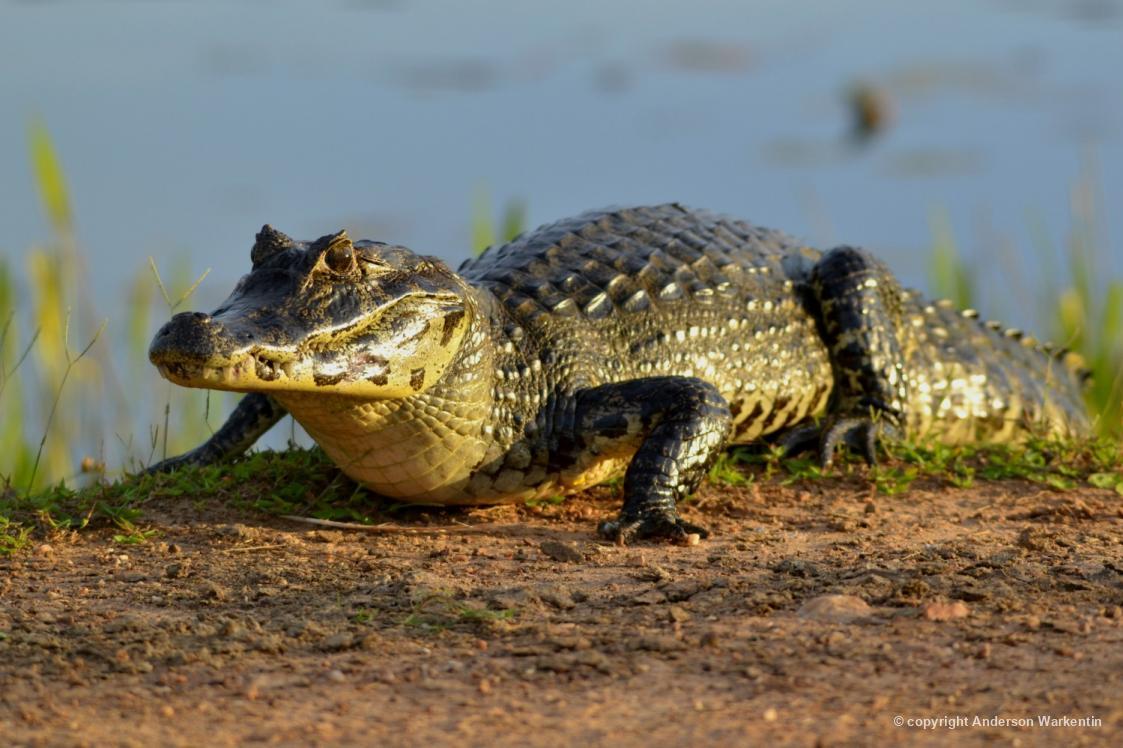
Caiman yacare
Caimans are alligatorid crocodylians within the Caimaninae subfamily and inhabit Central and South America. These group is one of two subfamilies of the Alligatoridae family, one family being alligators. Caimans are relatively small crocodilians.
Black Caiman
The black caiman, Melanosuchus niger, is a large crocodilian, and are carnivorous reptile living commonly along slow-moving rivers and lakes, or in the seasonal- flooded Amazon basin savannas, and fresh water habitats in South America.
9) Aves / Fowls

Chicken pair (Hen and rooster)
Chicken eggs
a day old chick
The chicken (Gallus gallus domesticus) is a domesticated fowl, and known as Red Junglefowl subspecies. Chicken or fowls are the most common and widespread domesticated animals, and there are more chickens in the world than any other bird species. Humans raise chickens primarily as a source of food, consuming both their meat and their eggs.
Red Junglefowl
Red Junglefowl
The Red Junglefowl (Gallus gallus) is a Pheasant family tropical member. It is thought to be ancestral to the domestic chicken, with some hybridization with the Grey Junglefowl.
Pheasant
Pheasant (Catreus wallichii)

Mongolian Ringneck Pheasant cock
Pheasants refer to some members of the Phasianinae are characterized by strong sexual dimorphism, males being highly ornate with bright colors and adornments such as wattles and long tails. Males are usually larger than females and have longer tails. Pheasant males play no part in “taking care” of the young. Pheasants typically eat seeds and some insects.
Common Pheasant
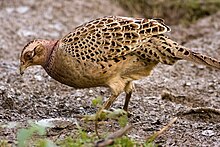
Common pheasant hen
New hatched Pheasant chick
The Common Pheasant (Phasianus colchicus), is a bird in the pheasant family, native to Georgia or Ancient Colchis, and introduced widely as a game bird. In parts of its range, namely in places where none of its relatives occur such as in Europe (where it is naturalized), it is simply known as the “pheasant“. Ring-necked Pheasant is both the name used for the species as a whole in North America and also the collective name for a number of subspecies and their inter-grades which have white neck rings.
Quails
Mountain Quail (Oreortyx pictus)
Crested Bobwhite Quail (Colinus Cristatus), Curacao, Netherlands Antilles

Scaled Quail or Blue Quail
Quail is a collective name for several genera of mid-size birds of Galliformes order.The bird similar to quails is called buttonquail are actually not quail at all, and was nicknamed because it resembles the quail features, and are members of the Turnicidae family, more closely related to the Charadriiformes. The King Quail, an of the Old World quail, is often sold in the pet trade and is commonly referred to there as a “button quail”. Many of the common larger species are farm-raised for the purpose of egg consumption or table food, that’s why quails are being hunted on the wild or on game farms.
Quail Egg as compared to a chicken egg, duck egg, and human hand
Potato galettes, served with quail eggs.
Quail eggs are often believed to be high in cholesterol , but according to some research evidence shows their cholesterol levels are similar to chicken eggs.
Ducks
Baikal Teal Duck, Russia and East Asia
Mandarin.duck
Pacific Black Duck
Goose
Cape Barren Goose
Goose Cape Barren, Nest with Eggs
Egyptian Goose
Geese are waterfowl belonging to the tribe Anserini of the Anatidae family. This tribe comprises the grey geese or anser genera, the black geese or Branta and the white geese or Chen. A number of other birds, mostly related to the shelducks, have “goose” as part of their name. More distantly related members of the Anatidae family are swans, most of which are larger than true geese, and ducks, which are smaller.
Swan
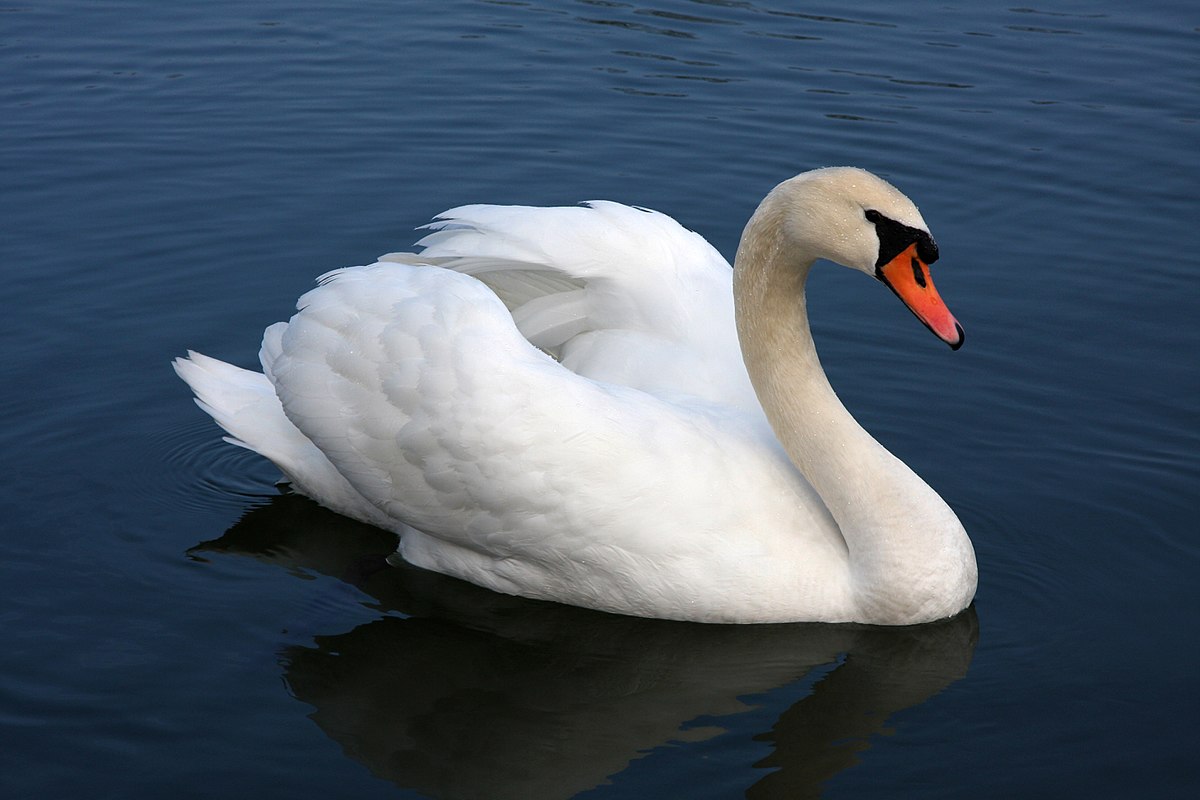
White Swan
Black Swan found in Australia

Swan’s Nest
Swans, genus Cygnus, are birds of the Anatidae family, which includes ducks and geese. The genus Cygnus have six or seven swan species in the genus, and in addition there is another species called as the Coscoroba Swan, although this species is no longer considered one of the true swans. Swans usually mate for life, though ‘divorce’ does sometimes occur, particularly following nesting failure. The number of eggs in each clutch ranges from three to eight.
10) Birds
Eurasian Oystercatcher birds
Oystercatcher Eggs Norway
The Eurasian Oystercatcher (Haematopus ostralegus) also known as the Common Pied Oystercatcher, or common name as Oystercatcher in Europe, is a long-legged in the oystercatcher bird Haematopodidae family. It is the most widespread of the oystercatchers, with three races breeding in western Europe, central Eurasia, Kamchatka, China and western coast of Korea. The oystercatcher is also called tjaldur and the national bird of the Faroe Islands.
Whooping Crane
Whooping Crane
whooping crane egg
Demoiselle Crane
Cranes are a Gruidae clade of large, long-legged and long-necked birds in the group Gruiformes. Unlike the similar-looking but unrelated herons, cranes fly with necks outstretched, not pulled back. Cranes live on all continents except Antarctica and South America.
Condor
American Condor
Andean Condor
California condor egg (image credit: nativestrength.com)
Condor is the name of New World vultures for two species, each in monotypic genus. The condor are the largest flying land birds in the Western Hemisphere. The New World and Old World vultures evolved from different ancestors, but both are carrion-eaters ( or rotten-animal’s flesh eater) and have “distinctive bare heads”.
Stork
Wood Stork
The Wood Stork (Mycteria americana) is a large American long-legged bird in the Ciconiidae stork family. It was formerly called the “Wood Ibis”, though it is not really an ibis.
Senegal Parrot
Senegal Parrot pair
Senegal egg
The Senegal Parrot (Poicephalus senegalus) is a Poicephalus parrot, which is a resident breeder across a wide range of west Africa.
Flightless Birds
Cassowary in Southern Jurong
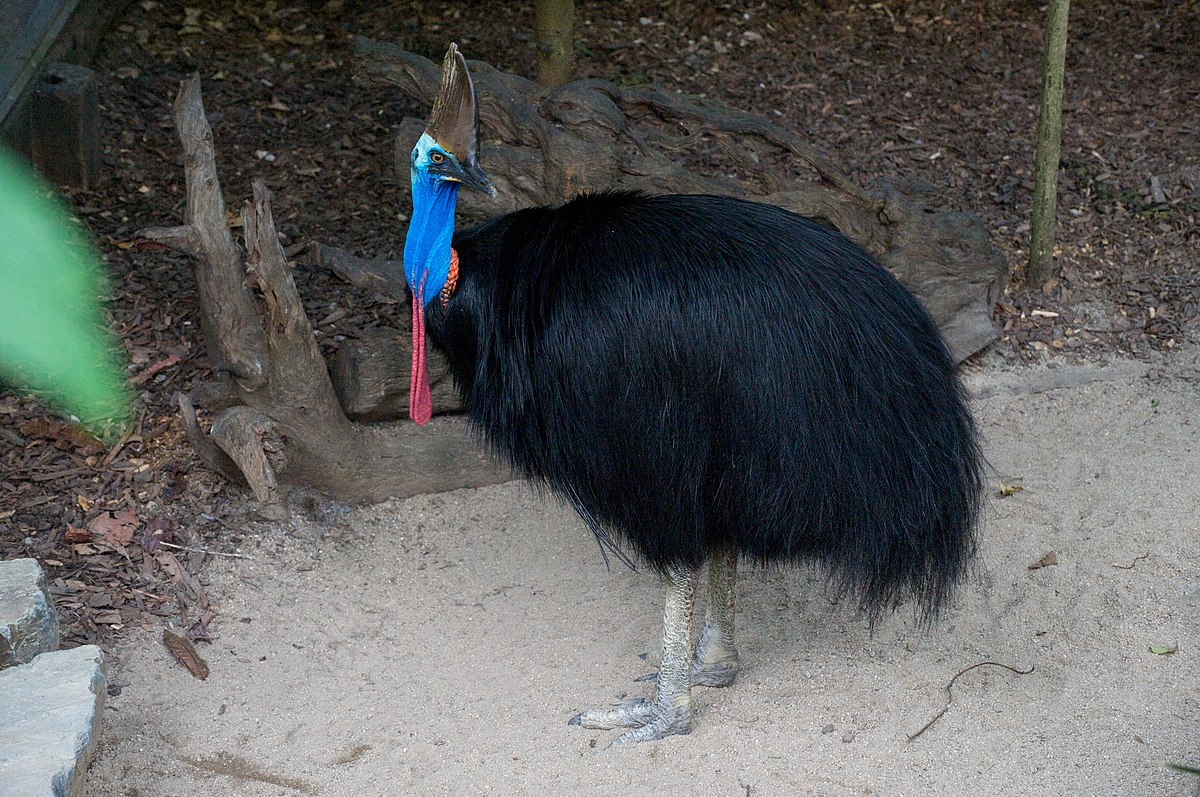
Southern Cassowary
Cassowary egg in Papua New Guinea (image credit: www.originpng.com)
The cassowaries are ratites , and a very large flightless birds in the genus Casuarius native to the tropical forests of New Guinea, nearby islands and north-eastern Australia, and there extant species, known today. Most common Southern Cassowary of these, the Southern Cassowary, is the third tallest and second heaviest living bird, smaller only than the ostrich and the emu. Cassowaries are omnivorous , and feed on fruits, shoots, grass seeds, fungi, vertebrates and invertebrates. Cassowaries are very shy, but when disturbed, they are capable of inflicting serious or even fatal injuries to dogs and people.
Emu
Emu bird
Emu head close up
Emu Egg
Emu egg nest
The Emu Dromaius novaehollandiae) is the largest soft-feathered, brown, flightless birds inhabits Australia and the only extant member of the Dromaius genus. It is the second-largest extant bird in the world by height, after its ratite ostrich relative. There are three subspecies of Emus in Australia,and is common over most of mainland Australia, although it avoids heavily populated areas, dense forest, and arid areas. It is the females that court the males, and during the mating season, they become physically more attractive. The female’s plumage darkens slightly and the small patches of bare, hairless skin just below the eyes and near the beaks turn turquoise-blue, although this is a subtle change.
Ostrich
Ostrich male left, female right
Ostriches Flapping
Ostrich egg
The Ostrich, or Common Ostrich (Struthio camelus), is one or two species of large flightless birds, found commonly in Africa, and only surviving Struthio genus and member of ratite family. Some analyses indicate that the Somali Ostrich may be better considered a full species apart from the Common Ostrich, but most taxonomists consider it to be a subspecies. Ostriches share the Struthioniformes order with the kiwis, emus, rheas and the cassowaries. It is distinctive in its appearance, with a long neck and legs and the ability to run at maximum speeds of about 70 km/h, the fastest land speed of The Ostrich is the largest living species of bird that lay largest eggs of any living or ectinct elephant birds of Madagascar and the New Zealand’s giant moa that laid larger eggs. When threatened, Ostriches run away, but they can cause serious injury and death with kicks from their powerful legs, their legs can only kick forward. Contrary to popular belief, Ostriches do not bury their heads in the sand.
Penguin, Flightless Bird
Emperor Penguin

Emperor Penguins
Emperor Penguin egg
Macaroni Penguin
Macaroni Penguins
Macaroni Penguin egg
Royal Penguins
Royal Penguins
Fiordland penguin or Tawaki (Crested Penguin)
Fiordland penguin ( Tawaki (Maori) crested penguin, New Zealand
Northern Rockhopper Penguin
Penguins are Spheniscidae famliy of Sphenisciformes order and are a group of flightless and aquatic birds, living almost exclusively in the Antarctica and southern hemisphere. Penguins adapted for life in the water, and countershaded dark and white plumage, and their wings evolved into flippers, and feed on fish, krill, squid and other underwater sealife. Penguins spend most half of their lives on land and half in the oceans, and build their nest, by making a shallow hole in the sand or in a weeded area. They put plants and stones inside the nest, and commonly, they lay two eggs, however, only one survives. The egg is kept warm by both parents for 35 days, done by rotating 12 day shifts. After hatching, the male watches out for the chick for 10 to 20 days and the female brings food for both of them. Around 20 days, the chicks will form a home for warmth and safety. The parents continue to feed it two to three times a day. When the chick is about 65 days old it will have its adult feathers and goes on its own.
Common Murre Birds
Common Murre Uria aalge
Murre Eggs
The Common Murre or Common Guillemot (Uria aalge) is a large auk or called Thin-billed Murreinhabiting North America, and spend most of their time at sea, and only go to land to breed on rocky cliff shores or islands. Common Murres can fly fast but are not mentally quick . They are more capable of moving underwater, typically diving to depths of (100–200 ft), and depths of up to 180 m (600 ft) have been recorded.Common Murres breed in high density colonies, nesting pairs may be in bodily contact with their neighbour. The Common Murre make no nest, their single egg is incubated on a bare rock ledge on a cliff face, and the eggs hatch after 30 days incubation. The chick is born downy or layer of fine feathers and can regulate its body temperature after 10 days.
Raggiana Bird of Paradise
Raggiana Bird of Paradise
The Raggiana Bird-of-paradise, (Paradisaea raggiana) also known as Count Raggi’s Bird-of-paradise, is a large bird in the Paradisaeidae or bird-of paradise family. It inhabits widely in southern and northeastern New Guinea, where it is commonly known as kumul or cenderawasih. The Raggiana Bird-of-paradise is Papua New Guinea national bird.
Brown-headed Cowbird
Brown-headed Cowbird male courting female left
Eastern Phoebe bird , tyrant flycatcher bird
Eastern Phoebe eggs with one Brown headed Cowbird egg
Ootheca (Insect eggs)
Mantis religiosa couple brown male and green female
Chinese Mantis (Tenodera aridifolia sinensis) ootheca
Ariadne merione or Common Castor Butterfly
Ariadne merione butterfly or common castor butterfly
Ariadne merione egg
Honey Bee

Western Honey Bee
Honey bee eggs and larvae inside the comb
Honey bee Pupae of drones


